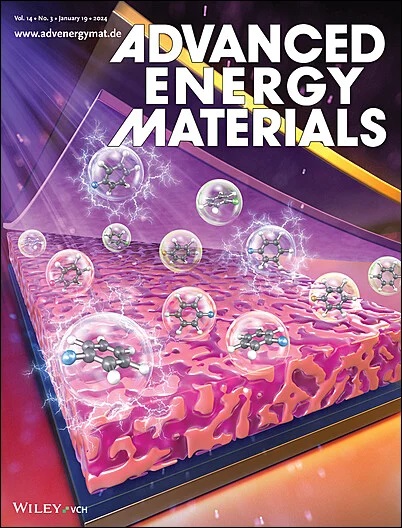Surface Reconstruction Activates Non-Noble Metal Cathode for Proton Exchange Membrane Water Electrolyzer
IF 24.4
1区 材料科学
Q1 CHEMISTRY, PHYSICAL
引用次数: 0
Abstract
Hydrogen generation via a proton exchange membrane (PEM) electrolyzer manifests the vertex of fundamental and practical studies on technology transferring electricity into hydrogen fuels. However, the harsh working conditions, especially the strong reductive acidic electrolyte-catalyst interface, make non-noble metal-based cathodes unsuitable for PEM electrolyzer. Here, a scale-up application of F modified CoP (CoP|F) cathode is demonstrated from 0.2 cm2 lab-scale three-electrode setup to a commercial 38 cm2 PEM electrolyzer. The operando X-ray absorption spectroscopy (XAS) and Raman results confirm that F modification can promote the breakage of Co─P bonds, reconstructed to amorphous metallic Co as true HER active sites. Density functional theory (DFT) calculations reveal that the presence of F in the CoP1-x lattice would lead to a more facile formation of P-vacancy under HER conditions, leading to more active zerovalent Co active sites for HER. This reconstructed surface shows high activity and tolerance in the reductive acidic electrolyte-catalyst interface. When used as a cathode in a commercial PEM electrolyzer, its performance is comparable to the state-of-the-art Pt/C catalyst, with a calculated hydrogen cost to be 2.17 $ kgH2−1. This work suggests a surface-reconstruction pathway to fabricate cost-saving and durable non-noble metal-based cathodes for commercial PEM electrolyzers.

求助全文
约1分钟内获得全文
求助全文
来源期刊

Advanced Energy Materials
CHEMISTRY, PHYSICAL-ENERGY & FUELS
CiteScore
41.90
自引率
4.00%
发文量
889
审稿时长
1.4 months
期刊介绍:
Established in 2011, Advanced Energy Materials is an international, interdisciplinary, English-language journal that focuses on materials used in energy harvesting, conversion, and storage. It is regarded as a top-quality journal alongside Advanced Materials, Advanced Functional Materials, and Small.
With a 2022 Impact Factor of 27.8, Advanced Energy Materials is considered a prime source for the best energy-related research. The journal covers a wide range of topics in energy-related research, including organic and inorganic photovoltaics, batteries and supercapacitors, fuel cells, hydrogen generation and storage, thermoelectrics, water splitting and photocatalysis, solar fuels and thermosolar power, magnetocalorics, and piezoelectronics.
The readership of Advanced Energy Materials includes materials scientists, chemists, physicists, and engineers in both academia and industry. The journal is indexed in various databases and collections, such as Advanced Technologies & Aerospace Database, FIZ Karlsruhe, INSPEC (IET), Science Citation Index Expanded, Technology Collection, and Web of Science, among others.
 求助内容:
求助内容: 应助结果提醒方式:
应助结果提醒方式:


